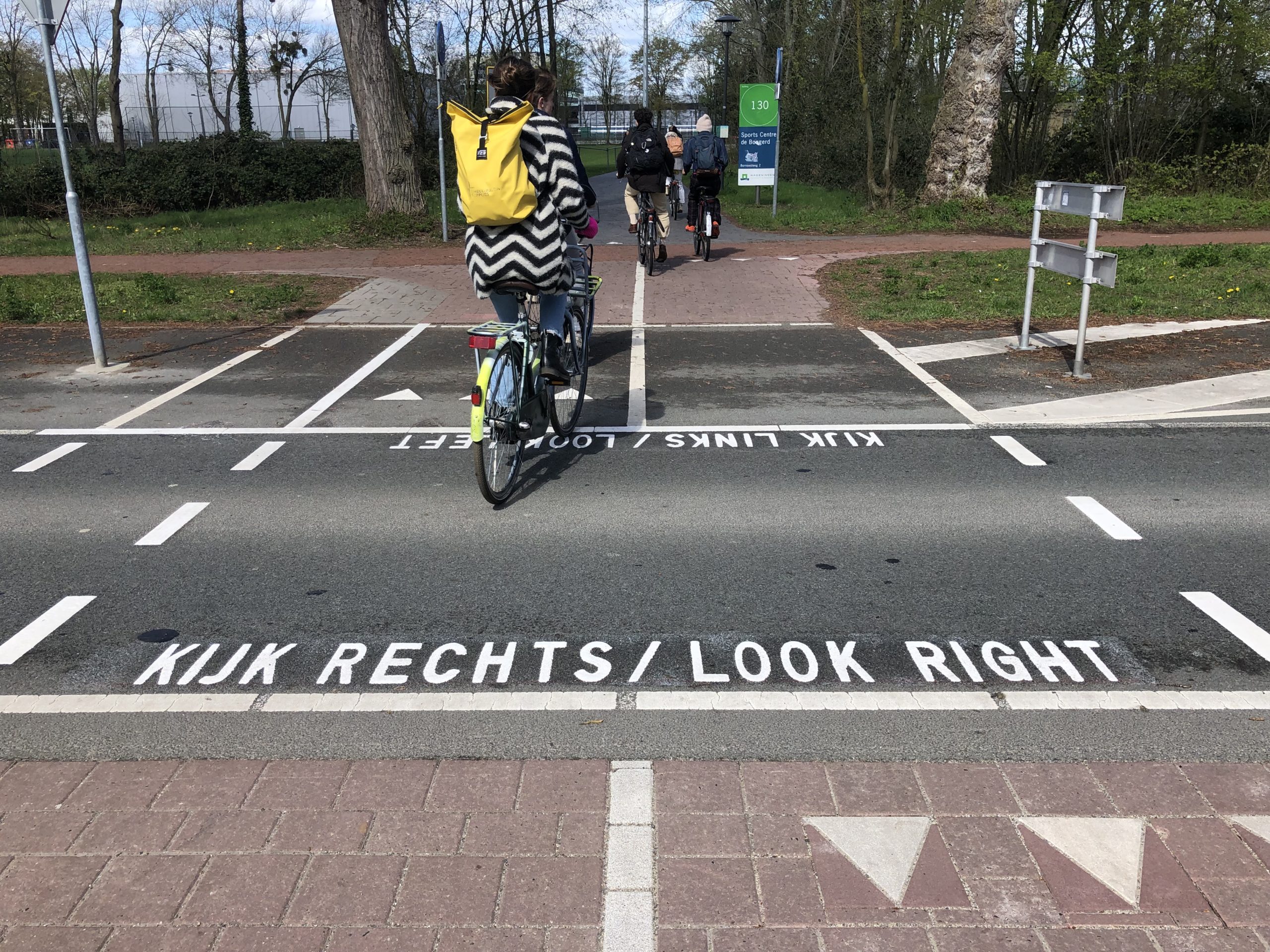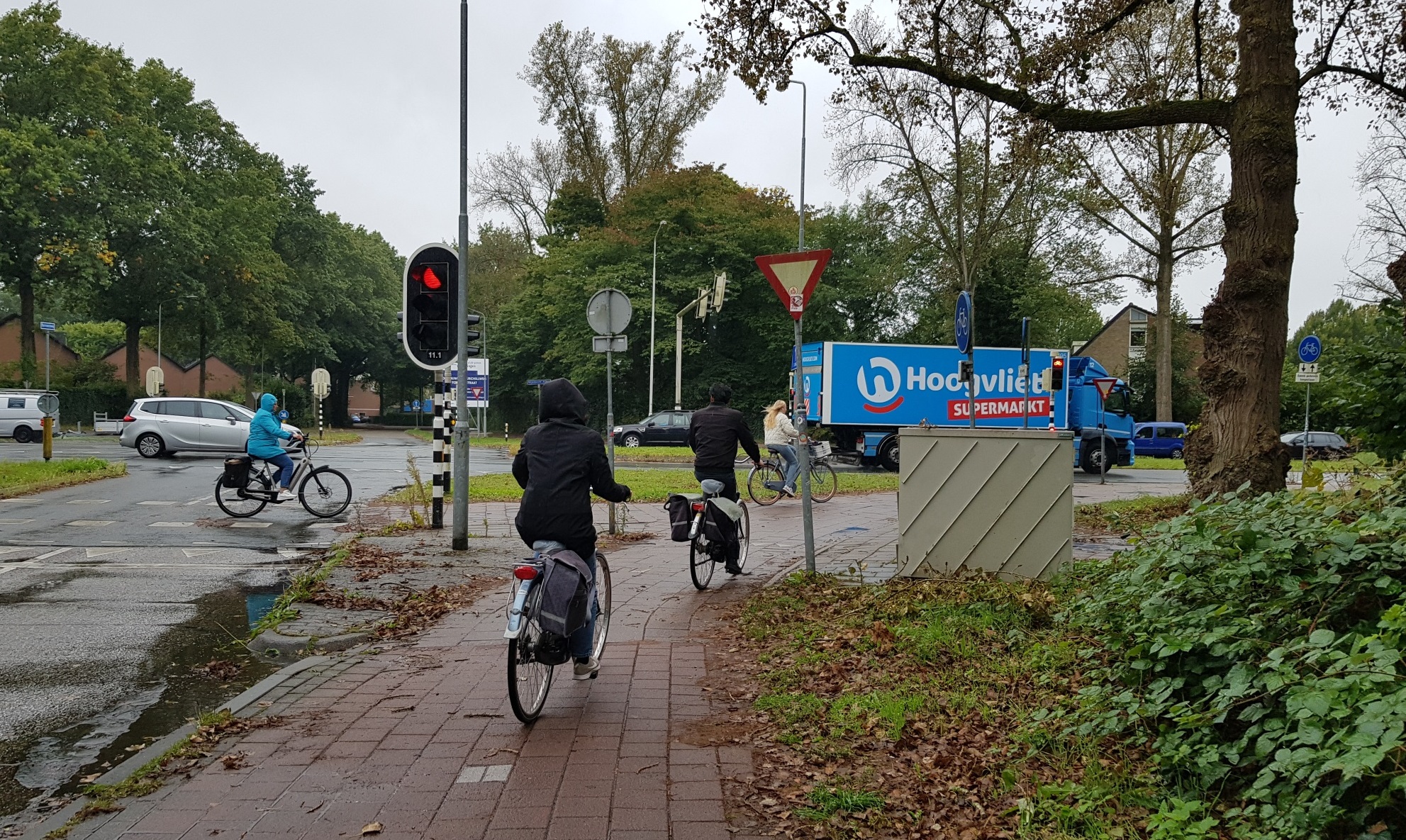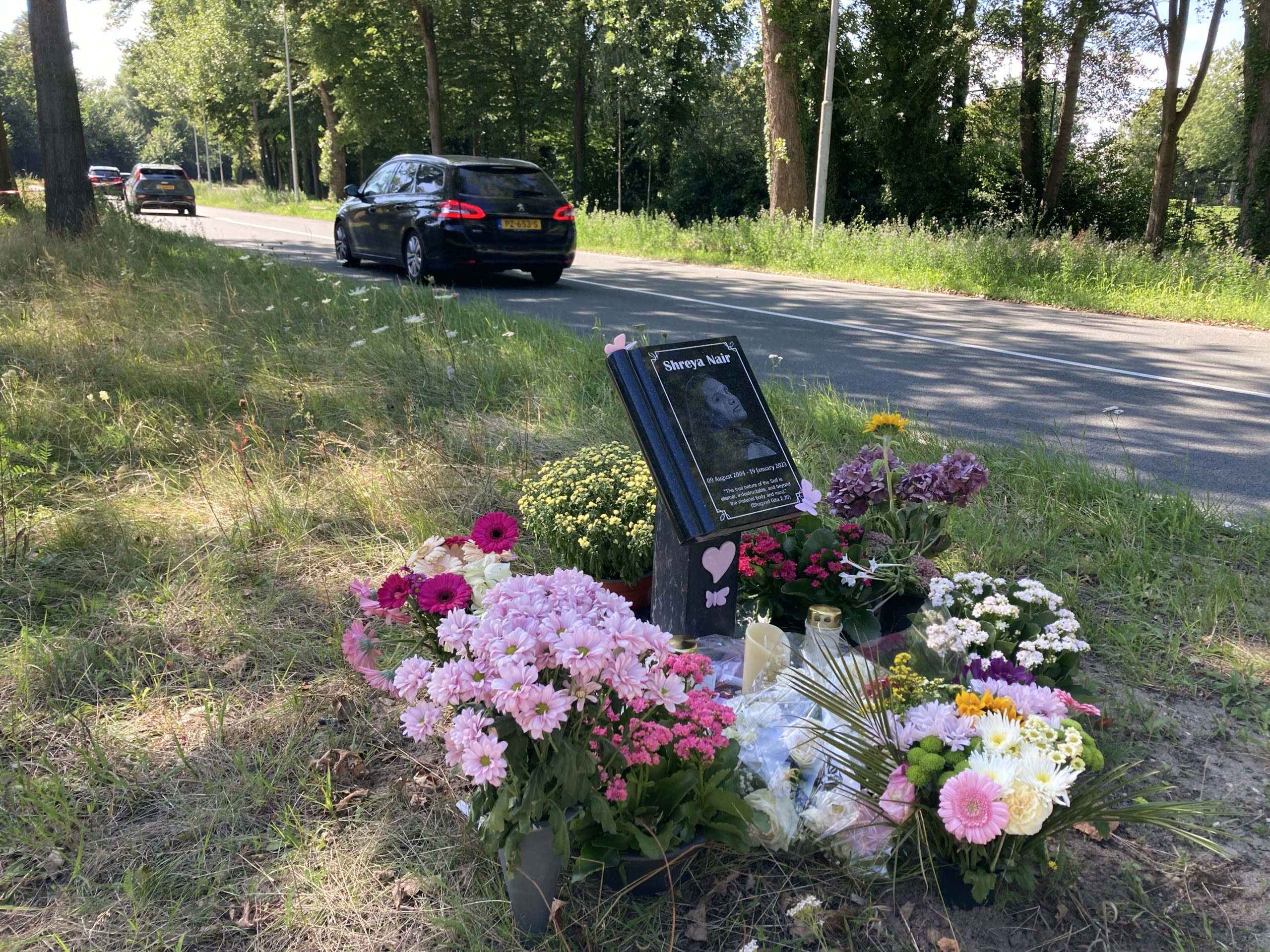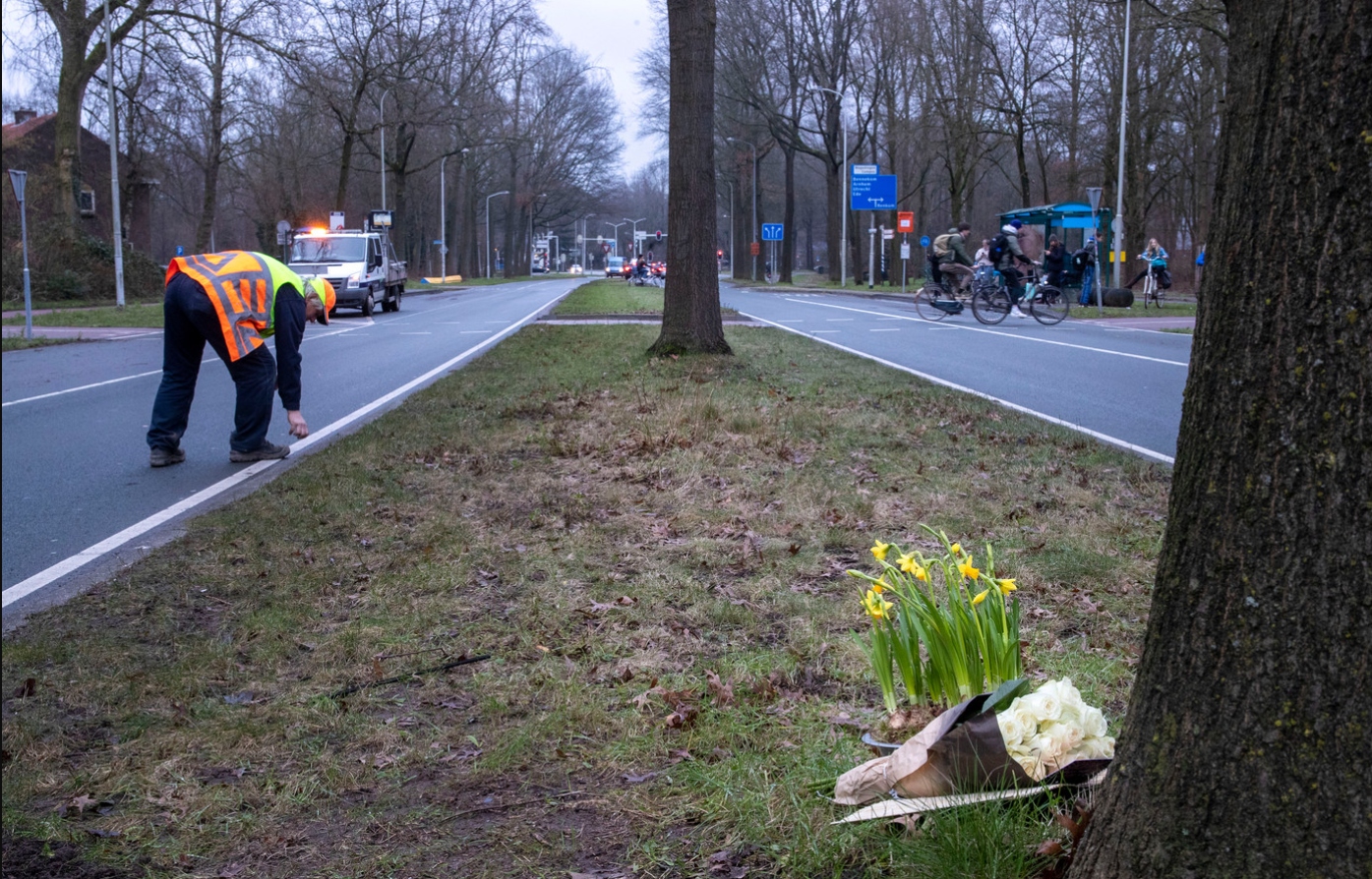‘Kijk rechts’, and ‘Look right’. This text now features on the road of the crossing on the Nijenoord Allee in Wageningen. On the other side, the text ‘Kijk Links’ and ‘Look Left’ face the oncoming cyclists. Together with some extra yield markings in the shape of white triangles, this aims to make the crossing safer for cyclists. It is here that an 18-year-old student was killed when she was hit by an oncoming van while crossing the road on 20 January.
The victim’s friends visited Mayor Floor Vermeulen to discuss adjustments to the crossing, where droves of students cross from Sports Centre de Bongerd towards the Churchillweg and the Hollandseweg.
Wageningen’s Cyclists’ Union also stepped up. Shortly after the fatal accident, they held a demonstration to raise awareness and call for a solution to the dangerous situation. Cyclists would like traffic lights installed. There is a plan to install them, but it will take several years for the plan to become a reality, as it is part of a more extensive operation to redesign the Nijenoord Allee.
Sufficiently safe
A spokesperson of Wageningen municipality says that several measures have been taken following the fatal accident in January, pending the outcome of the traffic accident analysis that the police are conducting. ‘We have taken another close look at the crossing on the Nijenoord Allee’, the spokesperson states. ‘The crossing was designed according to regulations and is sufficiently safe. Still, we saw further opportunities to improve the signs and road markings.’
These improvements were implemented between 30 March and 6 April. ‘We added text on the road in Dutch and English, added more yield markings and moved the “please give way” sign. Moreover, the pedestrian crossing is marked by a dotted line.’
‘Cyclist, watch out’
The Cyclists’ Union is dissatisfied with the measures. ‘We were not consulted in the discussion on how to make the crossing safer’, says board member Roger Heijljes. ‘We stand by our proposal to install the traffic lights that are planned for a couple of years into the future, now.’
Heijltjes feels that the municipality’s measures are targeted solely at cyclists. ‘This solution is just another way of saying “cyclist, watch out”, while drivers are not required to adjust.’
The speed limit on the Nijenoord Allee is 50 km/h. The Cyclists’ Union has advised the speed limit be lowered to 30 kilometres per hour to increase the safety of cyclists.
This article was previously published in De Gelderlander/Arnold Winkel

 Photo: Resource.
Photo: Resource. 


If the crossing has been designed ‘according to the guidelines’, then it is time to change those guidelines. As this ‘case study’ clearly shows. The current guidelines are clearly old-fashioned.
The way the municipality ‘blames the victim’ in this way is pretty shameful. The speed and flow of cars is clearly prioritized above the safety of inhabitants here.
In the 21st century you would expect safety, sustainability, biodiversity and justice to be above the speed of cars in the city. Especially in a university city where the motto is ‘to explore the potential of nature to improve the quality of life’. How do these measures fit this motto?
I hope that WUR will soon speak out in favor of real measures, that really protect cyclists and pedestrians instead of pointing to their ‘own responsibility’. In the ‘new’ situation, it is still easy to make a really stupid but deadly mistake. For example: You meet somebody who cycles in the other direction and you greet each other on the crossing. This made you just a few seconds ‘distracted from trafic’. Should that be deadly?
The people who cross here are mainly students and employees of WUR. Safety is number one, right?